
What is Baselining and what is a Project Baseline?
- Arunabh Satpathy
- April 6, 2023
- 7 minutes
A project baseline is a documented starting point that establishes and measures a project’s performance metrics against earlier benchmarks. Baselines are a must-have for all teams to conduct meaningful performance measurements.
Every step of a project depends on a strong baseline as a starting point. A study of 48 megaprojects showed that “poor execution” caused cost and time overruns in 73% of cases. Causes of poor execution included low budgets, incomplete design, unclear scope, corner-cutting, and even clerical errors in scheduling and risk assessment.
This guide covers the definition of baselining, its importance in application lifecycle management (ALM) and project management, and how to execute baselining at the highest level in your company.
What is a Project Baseline?
In project management, a baseline is a starting point that teams can use to measure their progress towards their goals. As a project progresses, you can update and add new project baselines. A team must deliver a project on time, within the budget, and to a fixed scope. All three factors are interdependent and are known as the Triple Constraint.
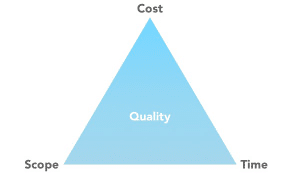
Cost – All projects must be completed within a certain budget. To minimize cost, you need to increase time and/or reduce the scope.
Time – You must complete all projects within a specific time frame to be successful. To minimize time, you must reduce the scope and/or increase the costs .
Scope – All projects have a certain scope or set of requirements to fulfill . The most important step to a project’s success is to define and document the scope. To increase the scope of the project, you must increase the project’s time or costs.
A project manager must constantly balance all three while meeting the quality standards of the project.
See how it works:
Ready to streamline your requirements management today?
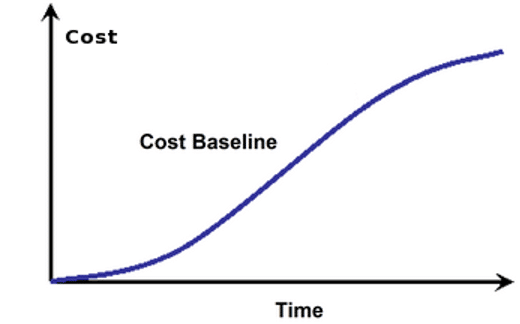
With regards to the baseline formula, we can concur that the baseline can change. Every time a change occurs, it is important to show the changes in the creation of a new baseline. This relates to the “approved changes” portion of the formula. The acknowledgement of a change to a baseline is called variance analysis.
Sometimes the scope, time, cost, or requirements of a project change. A baseline should reflect this change, which also affects the final product. The practice of comparing the final project outcome to the original project expectations is called variance analysis.
Variance analysis takes a look at the 3 factors of creating a baseline (scope, cost, and time) and identifies a baseline for each factor, therefore, making it easier to calculate the changes.
During this process, a project manager must take the triple constraints into account and create a baseline for each.
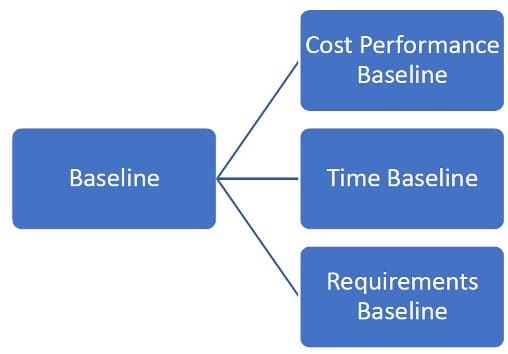
Why is Baselining so important?
A project manager must completely define and document a project before it starts. An effective baseline serves as a project’s benchmark and gives stakeholders insight into its performance. From there, a PM can make appropriate process modifications as needed. You can categorize these benefits under several heads:
1. Assessing Performance
Establishing a baseline allows you to assess performance throughout the duration of a project. If a project is performing behind time schedule or above budget, it is time to either make changes to the baseline or add more resources by increasing time or costs.
2. Measuring Performance
Baselining can also help with Earned Value Management, a technique project managers use to measure and compare a project’s performance with its baseline and original cost estimates.
Calculating Earned Value Requires:
Planned Value (PV) = The budgeted cost of work scheduled. PV represents the total cost of the work your team intends to complete in a time frame.
Actual Value (AC) = Actual Costs of work performed to date. AC is the total cost of the work your team has completed in a time frame.
Earned value (EV) = The total project budget (PV) x % of project completion. EV is the value of the work that your team has performed up to a certain point.
Schedule Variance (SV) = EV – PV. It shows the difference in cost between the original estimates and the eventual cost.
Cost Variance (CV) = EV – AC. It shows the difference in cost between the original estimates and the eventual cost.
These basic metrics help you determine your project’s performance. You can also use these for more granular metrics.
Schedule Performance Index (SPI) = EV/PV measures the progress that is achieved to date against the progress that is initially planned.
When SPI<1, less work was achieved than planned
When SPI>1, more work was achieved than planned
Cost Performance Index (CPI) = EV/AV and measures the value of work completed against the cost of the work planned
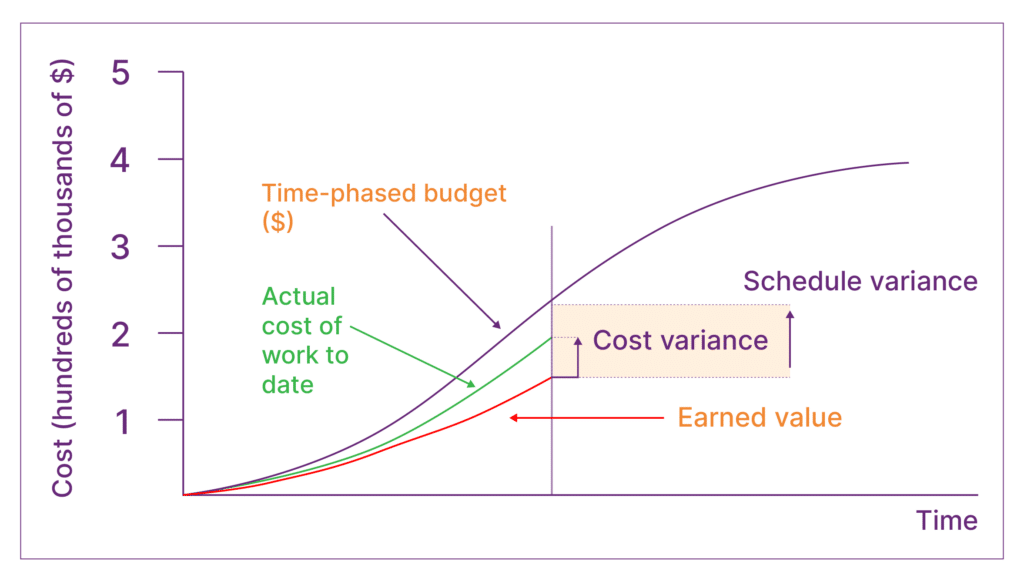
2a. Future Estimation Accuracy
Lastly baselining helps with future estimation accuracy i.e., how accurate your estimation of costs is. Keeping an accurate record of current project estimates and an actual outcome allows for application of estimates onto similar future projects. Through the use of Variance analysis, you can calculate the margin of error, which you can build onto future project estimations.
Estimated at Completion (EAC) is a metric that predicts the total project cost so you can allocate resources properly.
EAC = (Total Project Budget)/CPI
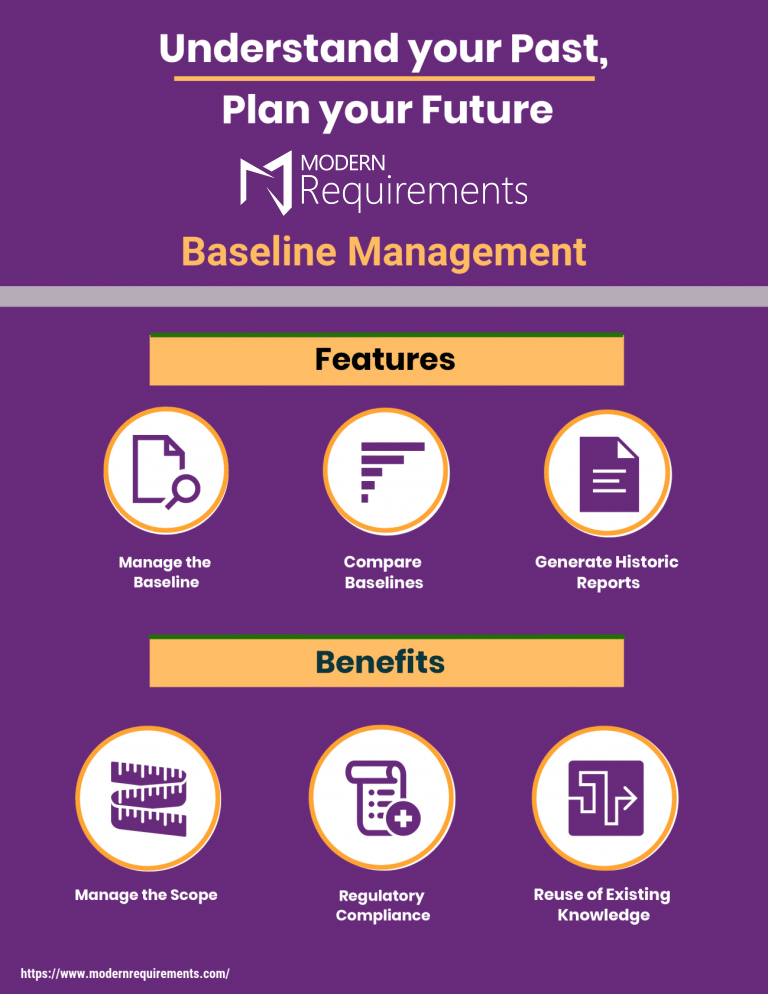
Common Project Baseline Problems/Pitfalls
Baselining is crucial for project management, but good project managers must avoid the following risks when creating baselines:
1. Performance Ambiguity
When the scope, cost or timeline of your project changes, the project baseline is altered. The changes to a baseline can create ambiguity in the actual performance of the project. The information you can use to effectively estimate future project scopes, cost, timelines, and quality, is inconsistent and decreases estimating accuracy the further out in time you go.
Often times, employees use data from an organization’s database without a verification process for accuracy and relevance. This absence of data verification can hinder accuracyand make the baseline ineffective. Project managers should take precautions to ensure the completeness, correctness and consistency of the data.
Project baselining strategies are, at times, rendered useless when you don’t begin your process with the end in mind.
2. Data Ambiguity
Poor mapping of data use creates ambiguity and incorrect choices of what data you should use or collect. Before starting a project, project managers must map out what variables to measure, what their purpose is, and how the team calculates the effect of variance .
Proper data mapping avoids issues like reassessing your initial baseline to correct and create changes and wasting time on unnecessary variables.
Once a project is complete, you can use a baseline as a document to inform future projects .
Best Practices
Efficient project managers also follow best practices to complete projects on time and within budget.
1. Using cutting edge requirements management tools
The right baselining tools can make a big difference. Modern Requirements4DevOps is a fully featured, browser-based, collaborative platform for baselining, requirements elicitation, management, and test document automation.
2. Setting the Original Project Baseline
At the initiation of any project, it is most important to set a baseline that represents your starting point of work. This is a useful method to document the change in various parameters of a project. The goal of setting a baseline is to avoid rewriting the baseline’s parameters, but to add on to it.
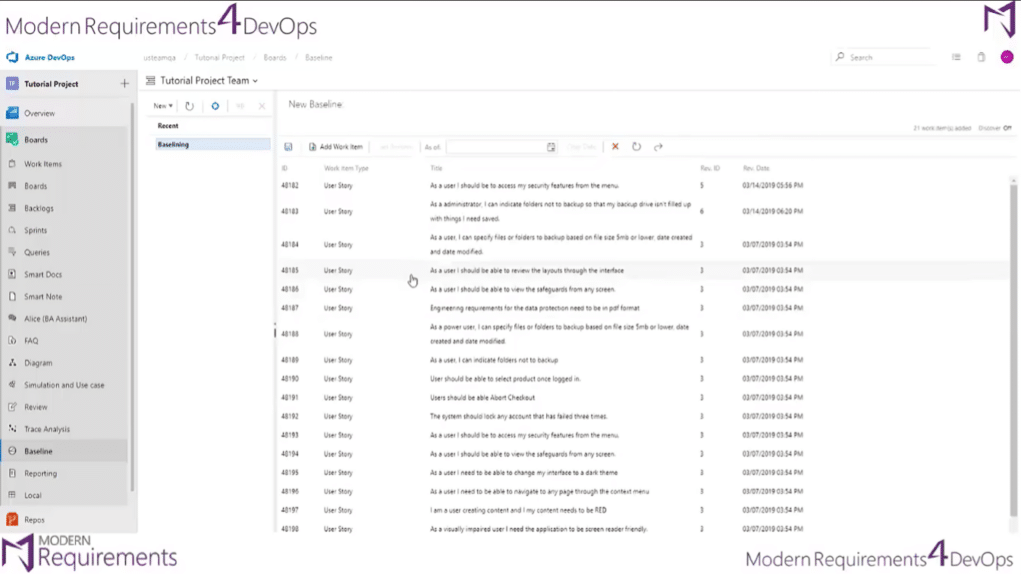
3. Keeping a record of Past Baselines
As you progress through a project, you will have to make changes. But before making and changes, save a history of previous baselines so you can still access the old baseline for comparisons and reverting changes.
4. Maintaining a Project Baseline
Once management approves a change to a project’s scope, cost, and timeline, it is now time to update the baseline by adding the new and approved scope, timelines, and budget changes. Keeping an accurate record of updates and changes to your baseline allows you to maintain it in line with the most current requirements.
As it is built into Azure Dev Ops, MR4DevOps becomes a single source of truth for your application lifecycle.
Conclusion
Baselining is the foundation of good project management. Poorly done, it can cost companies hundreds of thousands of dollars for projects that dissatisfy customers. But if you understand baselines, their impact, how to execute them well, and use the right tools, you can take project success to the next level.



